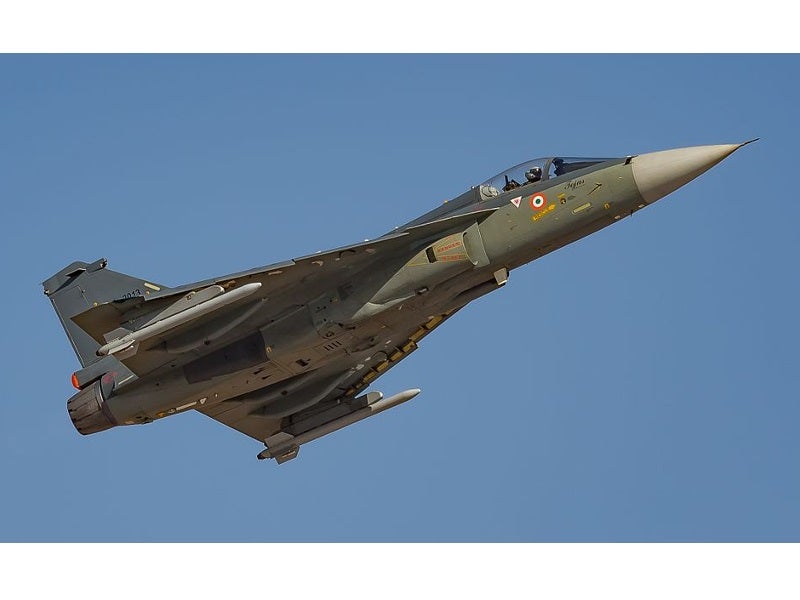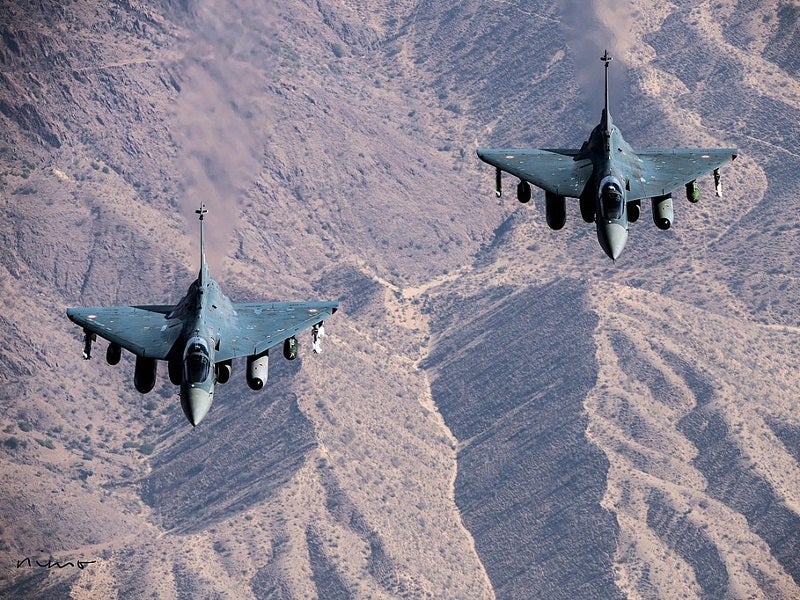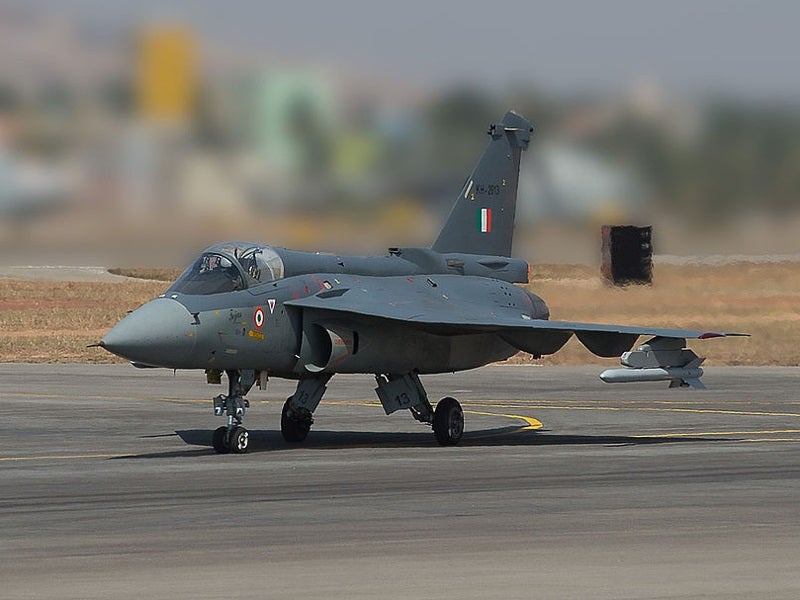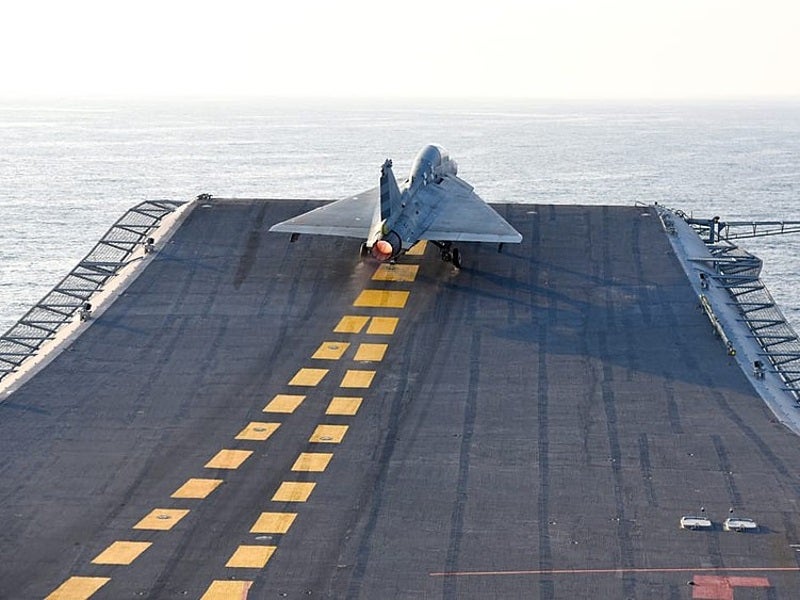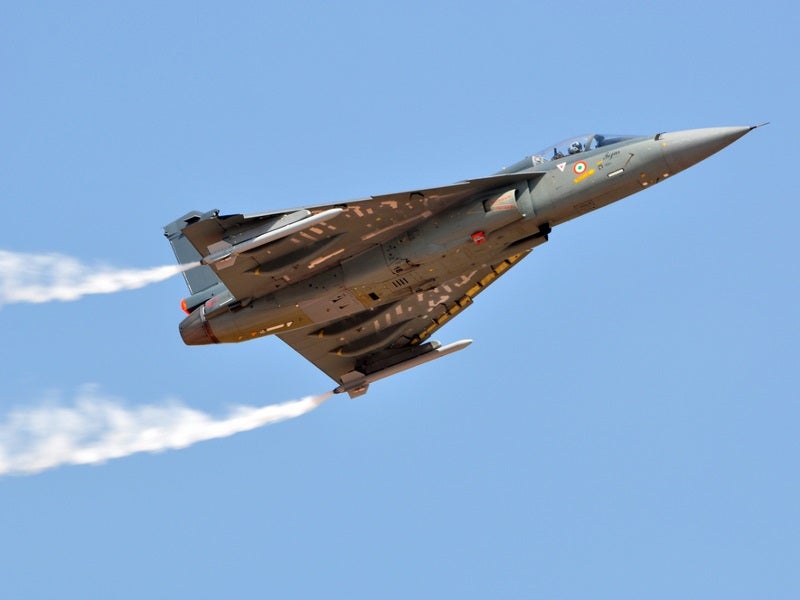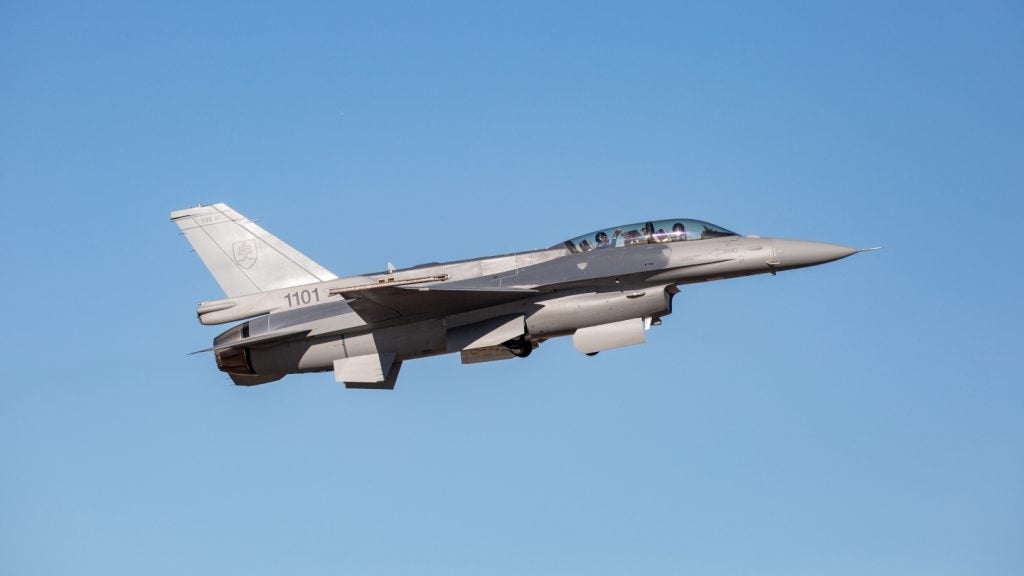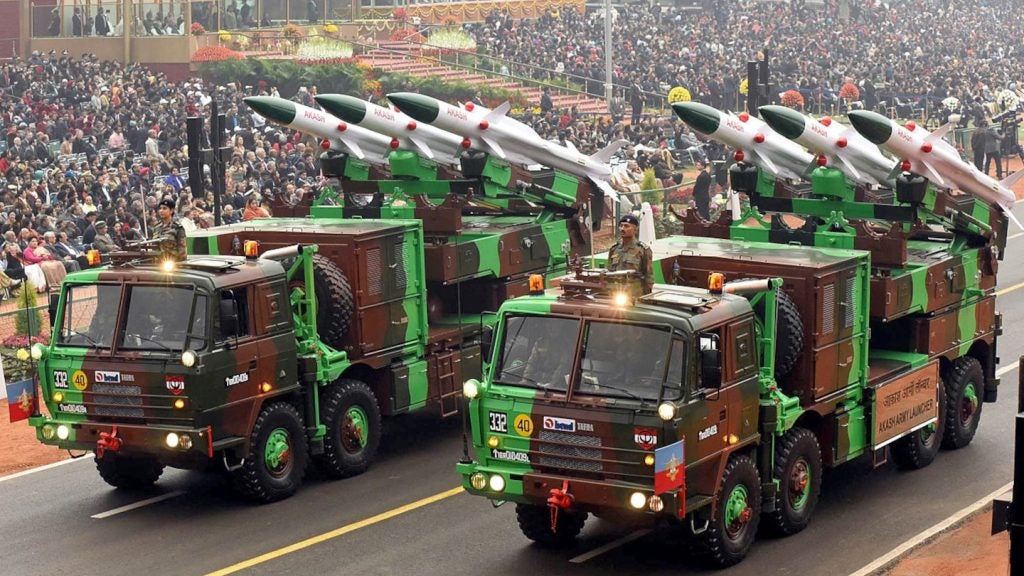The Tejas single-seat, single-engine, lightweight, high-agility supersonic fighter aircraft entered service with the Indian Air Force (IAF) in July 2016.
As of December 2019, Tejas had flown 4,599 test flights up to speeds of Mach 1.4.
The aircraft’s design and development programme was led by the Aeronautical Development Agency (ADA) of the Indian Department of Defence, with Hindustan Aeronautics Limited (HAL) as the prime industrial contractor.
A Tejas naval prototype successfully completed a flight test aboard Indian Navy’s aircraft carrier INS Vikramaditya in January 2020. The first Tejas Mk1 in final operational clearance (FOC) configuration entered service with the IAF in May 2020.
HAL Tejas demonstrator aircraft maiden flight
The first LCA Demonstrator I aircraft made a maiden flight in January 2001, with the LCA Demonstrator II flying in June 2002.
In addition, a second prototype vehicle (PV-II) made its maiden flight in December 2005 and third in December 2006. In April 2006, the Indian Government approved limited series production of 20 Tejas for the air force.
The first flight of the production aircraft was undertaken in April 2007, followed by the Tejas trainer variation’s first flight in November 2009.
The fourth and fifth limited series production aircraft (LSP-4) took their first flight in June and November 2010, respectively. Initial operational clearance (IOC) testing was completed in December 2010 and certification was approved in January 2011. The LSP-7 completed its maiden flight in March 2012 and the first flight of LSP-8 was made in March 2013.
Tejas successfully fired an infrared-seeking air-to-air missile during weapon release flight tests in December 2013. It achieved the IOC in December 2013.
The first prototype completed its first flight with an advanced electronic warfare (EW) suite developed by DRDO.
In October 2014, the first series-production aircraft successfully completed its maiden flight and was handed over to the Indian Air Force in January 2015.
The second series production (SP2) aircraft successfully completed its maiden flight in March 2016.
The aircraft’s naval prototype completed its maiden flight in April 2012. HAL handed over the first two Tejas aircraft to the Indian Air Force (IAF) in July 2016.
HAL Tejas conceptual design flight trials
“The IAF ordered 40 Tejas aircraft, of which the first 20 will be built according to IOC standards.”
The smallest, lightweight, multirole, single-engine tactical fighter aircraft in the world, Tejas aircraft is developed as a single-seat fighter aircraft for the IAF, and a two-seat training aircraft. In November 2008, the IAF confirmed a requirement for 140 Tejas aircraft for seven squadrons.
The design of a carrier-borne Tejas in single-seat and two-seat versions, including a modified nose, strengthened landing gear and an arrestor hook, was granted approval in 1999. This has retractable canards and adjustable vortex control.
A development programme for the carrier-borne versions was agreed by the Indian Government in 2002, and the first flights of two prototype aircraft were completed in 2009. The carrier variant is intended to replace the fleet of Sea Harriers.
The IAF started the second phase of hot weather flight trials on the Tejas fighter jet in June 2010. The test was carried out at temperatures up to 45°C and examined the digital flight control computer, avionics systems, multimode radar, RWR and the electrical and environmental control systems.
The ADA carried out a conceptual design study of the ADA medium-combat aircraft, which is an advanced, stealth version of the Tejas, to replace the IAF Jaguar and Mirage 2000 fleet. This version has two engines with fully vectoring nozzles and no vertical or horizontal tail.
India carried out initial flight tests on the fourth production version of the Tejas.
Orders and deliveries of HAL Tejas and delta platform design
The IAF ordered 40 Tejas aircraft, including 20 Tejas Mk1 and 20 Tejas Mk2. The first 20 fighters are built according to IOC standards and the remaining will be built to the FOC configuration.
Tejas Mk2’s maiden test flight is scheduled for 2022. The IAF received four Tejas Mk1 aircraft by July 2017. The Mk1 version received the FOC in February 2019.
In November 2016, Defence Acquisition Council (DAC) of India cleared the acquisition of 83 Tejas Mk1A variants, bringing the total number of orders to 123.
Tejas has a delta platform design with shoulder-mounted delta wings. It has a fin but no horizontal tail.
Lightweight materials, including aluminium, lithium and titanium alloys, and carbon composites, have been used in the construction. The wing structure includes composite spares and ribs with a carbon fibre-reinforced plastic skin.
Bangalore-based National Aerospace Laboratories (NAL) has designed and is responsible for the production of the fin and the rudder, and the construction of the aircraft fuselage.
Cockpit of the Indian supersonic fighter aircraft
The LCA Tejas is fitted with a night vision compatible glass cockpit with Martin Baker (UK) zero-zero ejection seats.
The cockpit has two 76mm × 76mm colour liquid crystal multifunction displays developed by Bharat Electronics, a head-up display developed by the government-owned Central Scientific Instruments Organisation (CSIO) in Chandigarh, and a liquid crystal return-to-home-base panel and keyboard.
A helmet-mounted display and sight (HMDS) is also included, while the hands-on throttle and stick control system minimises pilot workload and maximises situational awareness.
Tejas has a quadruplex fly-by-wire digital automatic flight control and its navigation suite includes a Sagem SIGMA 95N ring laser gyroscope inertial navigation system with an integrated global positioning system.
The communications suite includes VHF to UHF radio communications with built-in counter-countermeasures, air-to-air and air-to-ground data link, as well as a HAL information friend-or-foe interrogator.
In addition, the cockpit includes an environmental control system developed by Spectrum Infotech of Bangalore. The avionics suite has an integrated utility health-monitoring system, ground proximity warning system, terrain referenced navigation system, instrument landing system, global positioning system, stores management system and three 1553B 32-bit mission computers.
An advanced cockpit enhances the comfort level of test pilots.
Tejas weapons and countermeasures
The Tejas fighter aircraft has eight external hardpoints to carry stores, with three under each wing, one on the centre fuselage and one installed under the air intake on the port side.
A 23mm twin-barrelled GSh-23 gun with a burst firing rate of 50 rounds a second and muzzle velocity of 715m a second is installed in a blister fairing under the starboard air intake.
The aircraft can be armed with air-to-air, air-to-ground and anti-ship missiles, precision-guided munitions, rockets and bombs. Electronic warfare, targeting, surveillance, reconnaissance or training pods can be carried on the hardpoints. Drop tanks can also be carried.
In October 2007, the aircraft successfully test-fired the R-73 air-to-air missile.
The Vympel R-73 (Nato code name AA-11 Archer) missile is an all-aspect short-range missile with cooled infrared homing. It can intercept targets at altitudes between 0.02km and 20km, g-load to 12g and with target speeds of up to 2,500km/h.
The Indian Government purchased Derby beyond-visual-range air-to-air missiles (BVR-AAM) from Rafael Advanced Defence Systems to incorporate on 200 aircraft. The Derby missile can engage targets at a range of 50km.
These missiles were delivered by the end of 2012. They superseded Astra BVR-AAM and accelerated the development process. The weapon tests on the Tejas fighter jet were carried out at the Pokhran range in September 2011.
Tejas LCA LSP4 fighter successfully test-fired a Derby BVR missile against a manoeuvrable aerial target format the Chandipur test range in May 2017.
The aircraft’s electronic warfare suite, developed by the Advanced Systems Integration and Evaluation Organisation (ASIEO) of Bangalore, includes a radar warning receiver and jammer, laser warner, missile approach warner and chaff and flare dispenser.
Sensors and radar of HAL Tejas LCA
Electronics Research and Development Establishment and HAL have jointly developed the aircraft’s multimode radar. The radar has multiple target search and track-while-scan and ground-mapping modes of operation. It includes pulse Doppler radar with Doppler beam shaping, moving target indication and look-up / look-down capability. The radar is mounted in a Kevlar radome.
Saab is offering a sensor package for Mk1A variant of the Tejas LCA. The package includes airborne electronically scanned array (AESA) fighter radar technology and an electronic warfare (EW) suite.
Tejas fighter jet turbofan engines and performance
The prototype development aircraft are fitted with General Electric F404-GE-F2J3 turbofan engines with afterburn.
Production versions are fitted with one General Electric 85kN F404-GE-IN20 turbofan engine with full authority digital engine control. HAL placed an order for 24 F404-GE-IN20 engines in February 2007.
“Tejas is developed as a single-seat fighter aircraft for the Indian Air Force.”
LSP-2 is the first aircraft to be fitted with the engine, and flight trials began in June 2008.
A new turbofan engine, the GTX-35VS Kaveri, developed by Gas Turbine Research Establishment, was originally intended to power the production aircraft, but delays in development led to the purchase of the General Electric engines.
Snecma-Larzac has been chosen as the industrial partner in engine development.
The Kaveri engine develops 52kN dry power and 80.5kN with afterburn, with Y-duct air intakes. The aircraft uses multi-axis thrust vectoring nozzles.
The Tejas LCA has wing and fuselage tanks and an in-flight refuelling probe on the front starboard side. Drop tanks with a capacity up to 4,000l, can be carried on the inner and mid-board wing and fuselage centreline hard-points. The aircraft is also fitted with a HAL gas turbine starter unit model GTSU-110.
It can fly at a maximum speed of 2,205km/h and a maximum altitude of 15,200m. The range of the aircraft is 3,000km and the service ceiling is 16,500m. The aircraft weighs approximately 5,450kg and has a maximum take-off weight of 13,500kg.
The Global Military Aircraft Market 2011-2021
This project forms part of our recent analysis and forecasts of the global military aircraft market available from our business information platform Strategic Defence Intelligence. For more information click here or contact us: EMEA: +44 20 7936 6783; Americas: +1 415 439 4914; Asia Pacific: +61 2 9947 9709 or via email.

